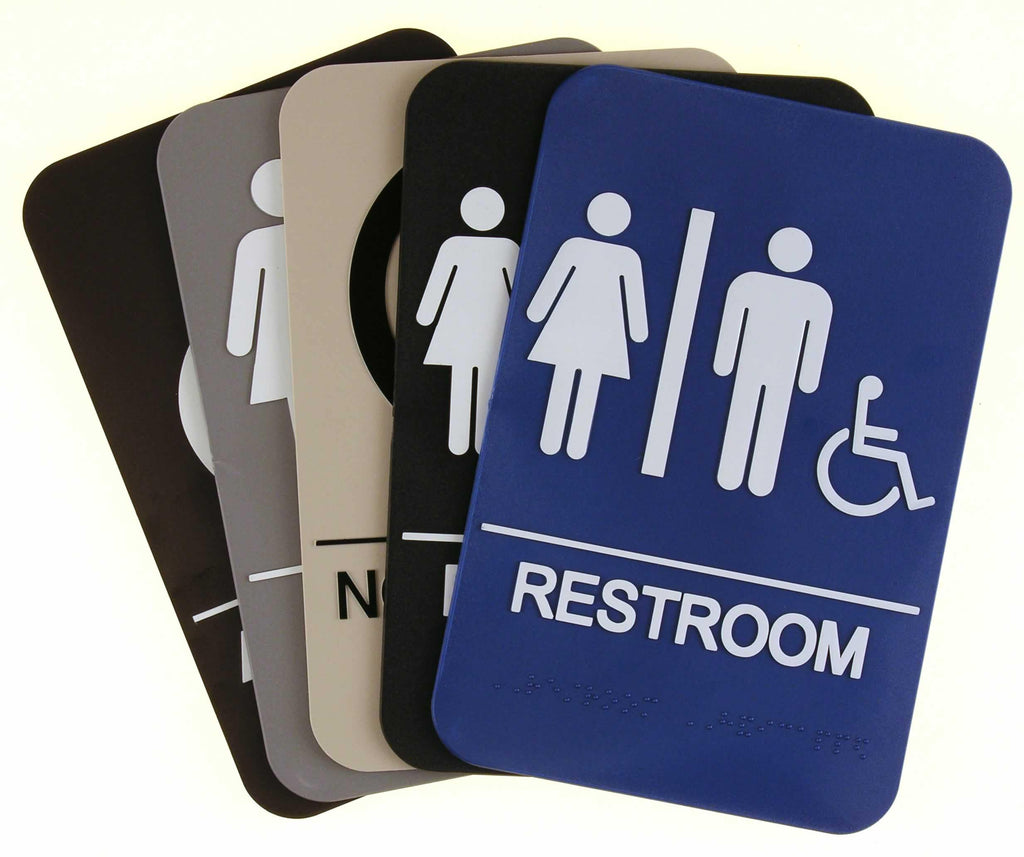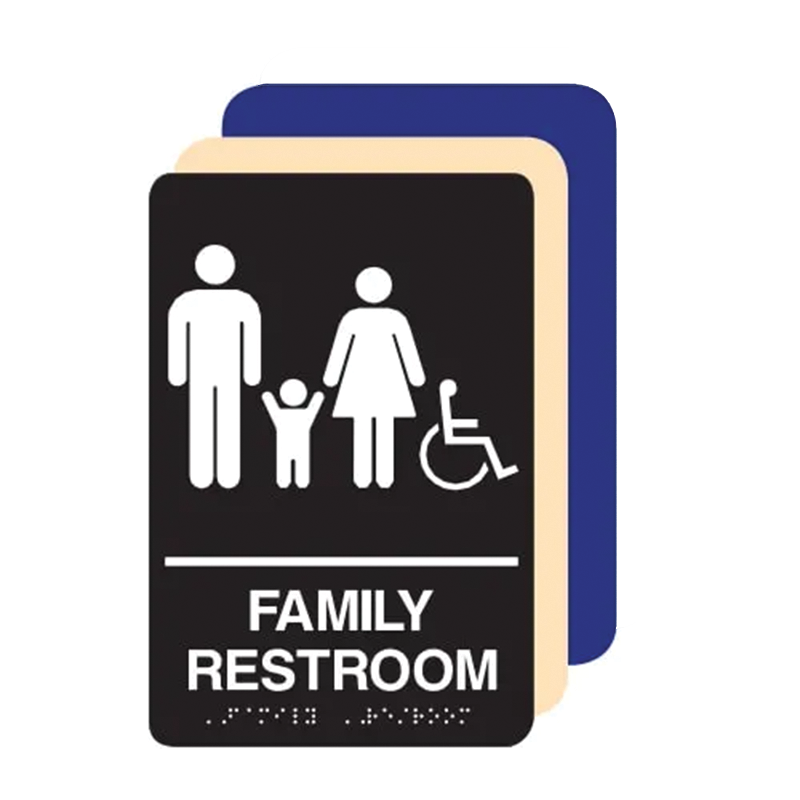ADA Signage: Ensuring Availability and Conformity in Public Spaces
ADA signage plays a vital function in ensuring accessibility and compliance within public areas, significantly contributing to an inclusive setting for people with handicaps. As we explore the nuances of ADA signs, from tactile features to make intricacies, it's crucial to consider how these elements coalesce to promote the rights of all individuals.
Significance of ADA Signage
In contemporary culture, the importance of ADA signage expands beyond simple compliance with legal mandates to symbolize a commitment to inclusivity and access for all people. These indications are vital in creating settings where individuals with handicaps can navigate public areas with the very same simplicity and independence as those without impairments. By providing standardized and clear info, ADA signs ensures that everybody can access facilities, services, and info without barriers.
The significance of ADA signs depends on its ability to boost the quality of life for people with specials needs by promoting equivalent access. It gets rid of the barriers that may or else prevent their capability to participate totally in community life. These indicators serve as noticeable indicators of a company's dedication to variety and equality, mirroring wider societal worths that promote the civil liberties and dignity of all people.
In addition, ADA signage plays an essential duty in public safety and security. By guiding people to exits, toilets, and other essential facilities, it makes sure that all individuals, regardless of physical ability, can evacuate securely throughout emergencies. In recap, ADA signs is not simply a governing demand however an effective tool for fostering a equitable and comprehensive society.
Crucial Element of Compliance

Positioning is essential; indicators need to be installed in locations that are easily visible and reachable. Typically, signs should be mounted in between 48 and 60 inches from the ground to ensure access for both standing and wheelchair individuals. Responsive elements, such as Braille, are vital for individuals with aesthetic impairments, giving vital info in a non-visual format.
High-contrast colors between the text and history are needed to enhance readability for people with low vision. The ADA mandates particular comparison proportions to ensure clearness. Furthermore, personality dimension is an essential consideration, with minimum elevation requirements determined by the watching range to make sure readability from different angles.
Layout Factors To Consider for Accessibility
Creating obtainable signs calls for a thorough strategy to ensure it fulfills the requirements of all customers, especially those with impairments. The size of the text is similarly crucial, with ADA guidelines recommending a minimum elevation based on watching range to guarantee clarity.
Contrasting shades in between message and background are crucial for visibility, specifically for individuals with visual problems. A high contrast proportion aids identify the text from its background, improving readability under different illumination conditions. Additionally, responsive elements, such as Braille and elevated personalities, are crucial for people that are blind or have reduced vision. These components should be situated at a regular height and placement to make certain very easy gain access to and understanding.
Additionally, the positioning of signage plays a significant duty in accessibility. Indications must be set up in locations that are unblocked and quickly reachable. Guaranteeing that signage is placed at proper elevations and angles allows all users, including those utilizing mobility devices, to connect with them properly.
Common Errors to Avoid

Another common mistake is the wrong placement of signs. ADA standards specify precise height and location demands to ensure that signs are obtainable and conveniently visible by all people, consisting of those making use of wheelchairs. Overlooking these guidelines not just hampers accessibility but likewise runs the risk of non-compliance with legal standards.
Furthermore, inadequate comparison in between text and history is a constant oversight. Appropriate comparison is necessary for readability, particularly for people with low vision. Designers in some cases pick colors that are visually enticing but do not have the essential comparison, providing the message hard to recognize.
Last but not least, some designers stop working to integrate tactile components, such as Braille, which are vital for individuals that are special info blind. Omitting these features not just leads to non-compliance with ADA policies however likewise limits accessibility for a sector of the populace that relies on responsive information.
Future Trends in Signage
Advancements in technology and raising recognition of inclusivity are forming the future fads useful source in signs design. Digital signage, for instance, is evolving to include real-time updates and interactive attributes, which can be vital in providing vibrant info in public areas.
An additional arising trend is the use of increased reality (AR) to boost individual experience. AR-enabled signage can overlay electronic info onto the physical environment, offering aesthetically damaged people with auditory or haptic comments. ADA Signs. This technology not just improves ease of access however likewise develops an interesting experience for all individuals
Sustainability is additionally a significant element influencing signage patterns. Environment-friendly materials and energy-efficient lighting options are being focused on to line up with worldwide ecological objectives. Furthermore, improvements in materials scientific research are bring about the growth of more weather-resistant and sturdy signs.
Verdict
ADA signs plays a vital role in ensuring ease of visit this page access and conformity within public spaces by including tactile aspects, high-contrast shades, and strategic positioning. The adherence to ADA requirements not only assists in risk-free navigation for individuals with handicaps however also represents an organization's devotion to diversity and inclusivity. By avoiding typical errors and welcoming future fads, public areas can remain to advance these worths, making certain that the civil liberties and self-respect of all people are valued and upheld.
ADA signage plays an indispensable role in ensuring access and conformity within public spaces, considerably contributing to an inclusive setting for individuals with disabilities. As we explore the subtleties of ADA signage, from tactile attributes to develop details, it's critical to consider how these aspects coalesce to promote the rights of all users.In modern-day culture, the importance of ADA signs extends past plain conformity with legal requireds to embody a dedication to inclusivity and availability for all people. By giving clear and standardized info, ADA signs makes certain that every person can access facilities, services, and details without barriers.
ADA signs plays an essential function in guaranteeing accessibility and conformity within public spaces by including tactile components, high-contrast colors, and tactical positioning. (ADA Signs)